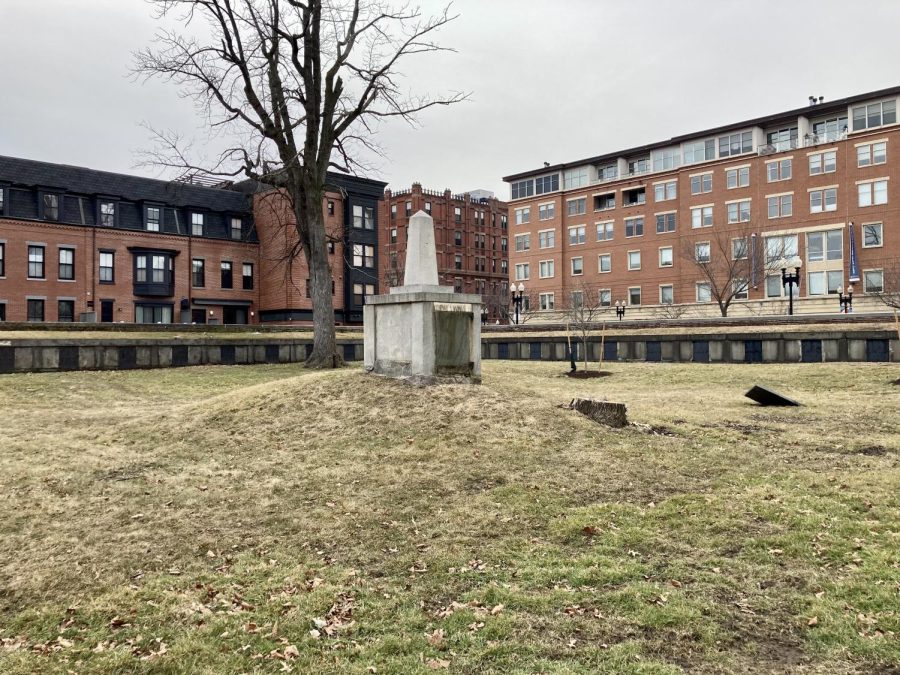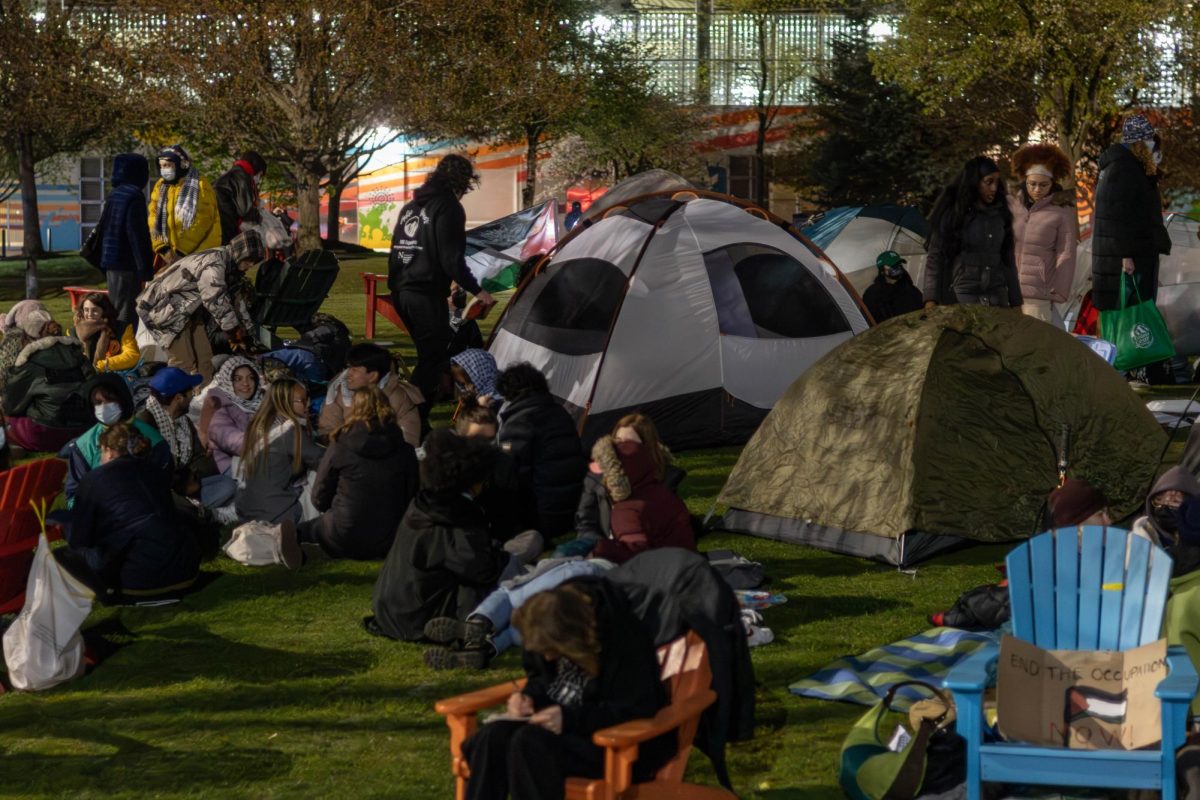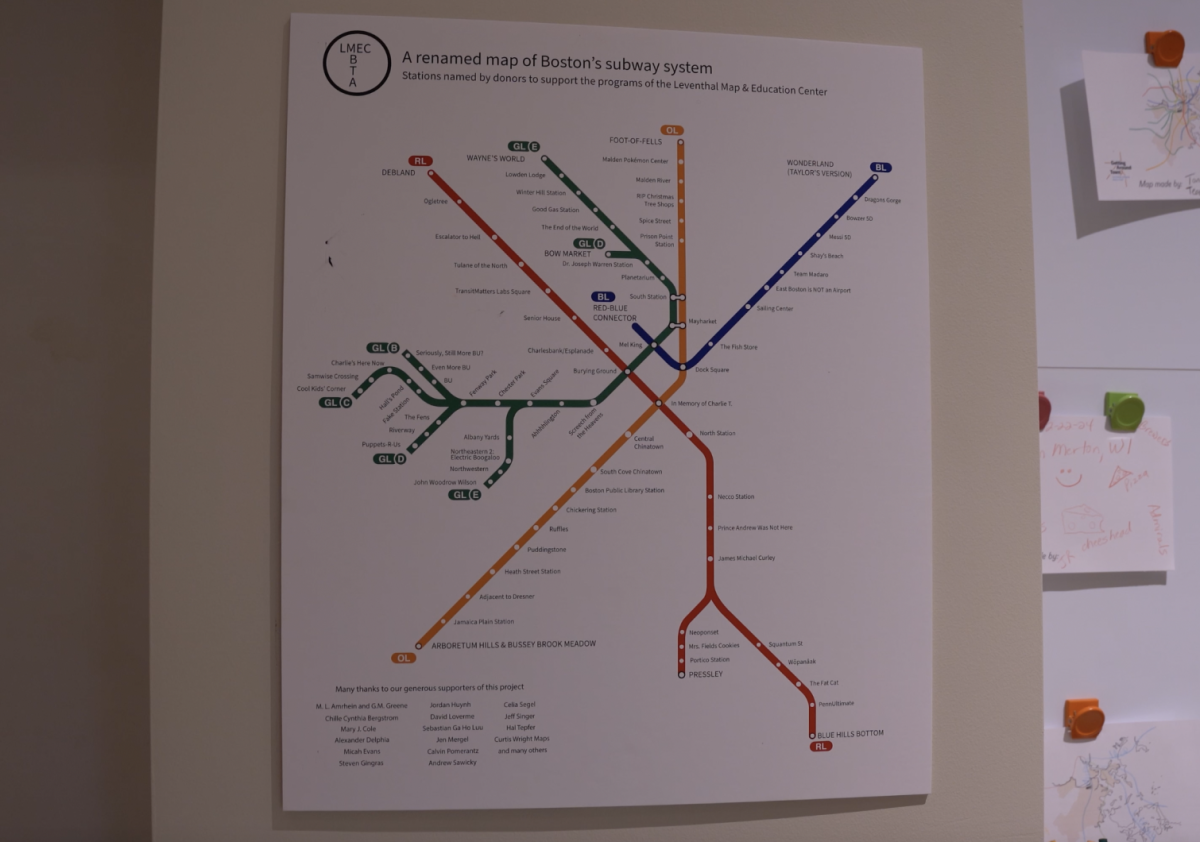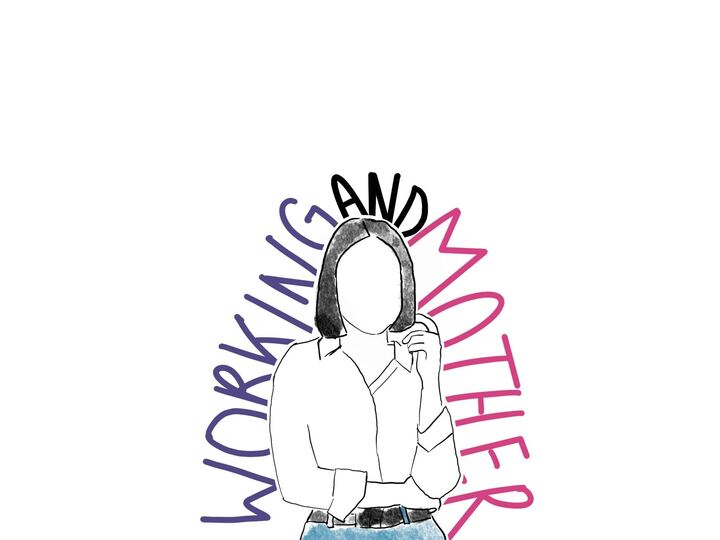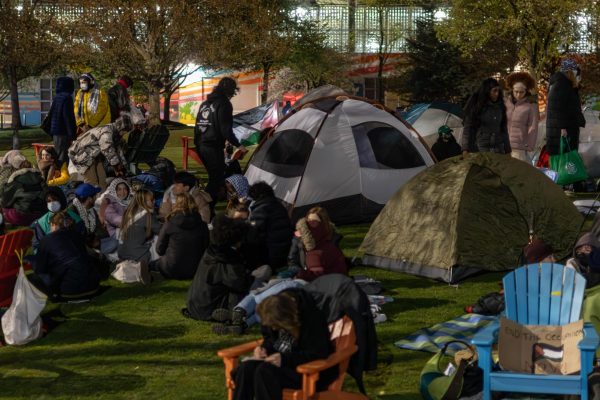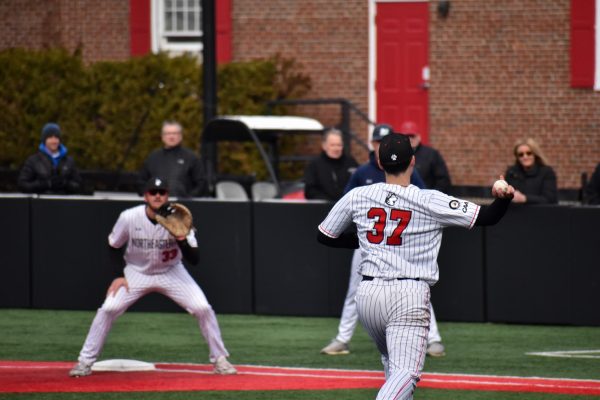The woman behind Boston’s burying grounds keeps stories alive
Kelly Thomas stands at the center of South End Burying Ground. Thomas is responsible for the preservation of 15 other cemeteries throughout Boston. Photo credit Kate Armanini.
February 25, 2022
The South End Burying Ground is hidden in plain sight. A cinder block wall obscures it from the busy road passing by. Inside, there are only 20 gravemarkers, spread out over an acre of yellowing grass.
But Kelly Thomas knows her way around the site. She knows the location of each headstone and which ones need repair. She knows the story behind each marker. She knows that about 11,000 people have been buried there.
As the director of the Historic Burying Grounds Initiative, a division of Boston Parks and Recreation, Thomas is accustomed to spending time in cemeteries.
“I don’t like saying director, because I have no staff. It’s just me,” Thomas said. “It is kind of solitary. I guess I don’t mind.”
For over two decades, Thomas has been responsible for the maintenance and preservation of Boston’s 16 historic burying grounds, whose founding dates range from 1630 to 1841. She oversees ongoing landscape and repair projects, hires independent contractors and surveys each site. She said her best work, however, is what can’t be seen.
“One thing about the gravestone conservation is if you do a good job, people don’t really notice it,” Thomas said. “You don’t want to look brand new, you just need to stabilize it so it doesn’t have further decay.”
Originally from Michigan, Thomas earned her masters degree in preservation studies from Boston University before she began at the Historic Burying Grounds Initiative in 2000. She said that she was always interested in history and the “feel of stone as a material.”
Headstones naturally undergo a process called delamination as they erode over time, Thomas said. At older burying grounds, many markers have just traces left of their former carvings, leaving names and dates lost for good. To prevent this, Thomas hires workers to fill cracks and use hypodermic needles and inject solutions into the slate.
She also does landscape projects, rerouting paths and fencing to improve accessibility in sites. Cemeteries, like the Granary Burying Ground on the Freedom Trail, get an estimated 1 million visitors annually.
Still, it isn’t just the graves of famed Founding Fathers and revolutionary heroes that interest Thomas.
“People know Paul Revere and John Hancock,” Thomas said. “But I’m more interested in the unknown. There’s just so many people.”
Ambling through a burying ground, Thomas can point to each grave and tell a story. Genealogists and others interested in their family history regularly reach out to her for information.
“There’s a very amusing headstone in Dorchester North [Burying Ground]. There was actually a family of gravediggers,” she said. “One of them has this huge headstone and he talks about how many people he’s buried, and he ends with ‘The last grave I dug was my own.’”
It’s not a particularly morbid job to Thomas, though.
“It kind of makes the people feel more alive,” she said.
According to Historic New England, preservation work like Thomas’ is crucial for the study of how cities like Boston have evolved and adapted overtime. Christina Pokwatka, a Historic New England preservation manager in the North Shore, called burying grounds “hourglasses into the past.”
“They’re really special because you can learn so much information on a stone,” Pokwatka said. “They’re essentially open-air museums. They’re really just fascinating to study: you can see how the materials have changed, how the designs have changed, even the wording on the stones.”
However, the job can take a toll on Thomas during data entry. For each grave, there are eight general fields to fill out, including birth and death date. Twenty-five percent of Boston’s historic headstones are for children 10 and under, according to Liz Sullivan, director of external affairs for the Parks Department.
“Maintaining a connection with the past becomes a very personal endeavor,” said Jere Gibber, executive director of the National Preservation Institute. “[Cemeteries] are a final resting place, a sacred place of burial, a place of remembrance and a place to mourn.”
Thomas said data entry is always “tedious,” but even more when she records one short lifespan after another.
“You start noticing a pattern, so that makes me sad,” Thomas said.
Thomas’ aunt passed away about five years ago, as did her mother in the past year. All this time spent surrounded by graves has made her reflect, Thomas said.
“I don’t know if it eases the burden or not. In some ways, I think it did because I feel like I dealt with it pretty well,” Thomas said. “Maybe if I hadn’t done this job I would have felt the same thing, but it’s a question I do think about.”
Thomas’ husband was raised Catholic and attended parochial school growing up. One of his stories has always stuck with her.
“They were told that people who worked in cemeteries take care of the dead, and it gives them an in to heaven,” Thomas said. “So I was like, ‘All right, I’ll take that.’”



